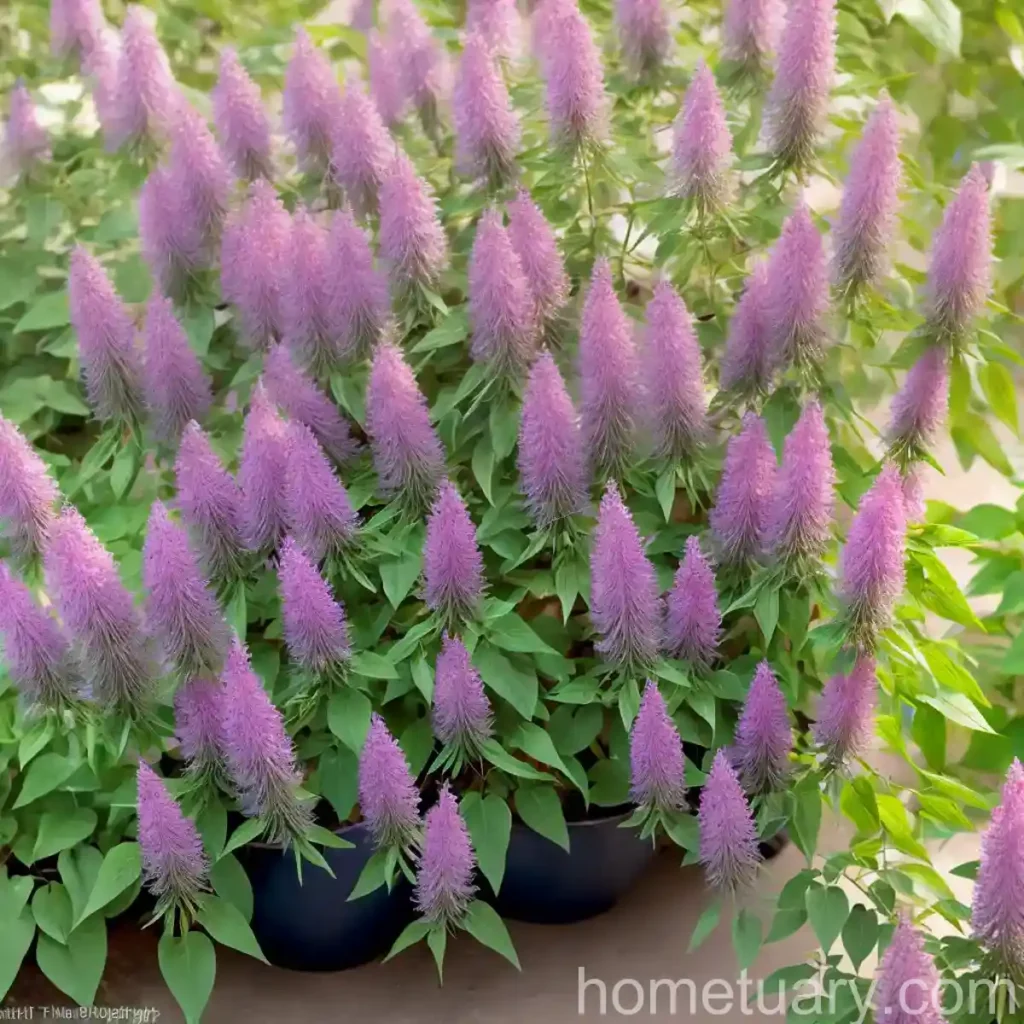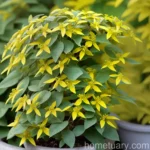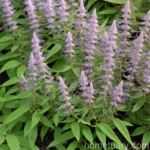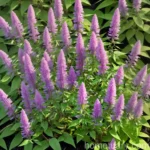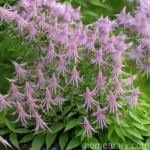Plant Profile: Bush Clover (Lespedeza thunbergii ‘Samidare’)
Bush clover, scientifically known as Lespedeza thunbergii ‘Samidare,’ is a stunning ornamental plant that offers a wealth of benefits to gardens and landscapes. With its graceful, arching stems and clusters of delicate flowers, this cultivar is a favorite among gardeners for its aesthetic appeal and ecological value.
In this comprehensive guide, we will delve into the cultural aspects, uses, care requirements, propagation techniques, common diseases and pests, as well as intriguing botanist’s tips and fun facts about bush clover. Whether you are a seasoned horticulturist or a gardening enthusiast, this article will provide you with valuable insights into incorporating Lespedeza thunbergii ‘Samidare’ into your garden or landscape.
Key Takeaways – Bush Clover (Lespedeza thunbergii ‘Samidare’)
Before we delve into the detailed aspects of bush clover, let’s take a quick look at the key takeaways of this cultivar:
- Botanical Name: Lespedeza thunbergii ‘Samidare’
- Common Name: Bush Clover, Samidare Bush Clover
- Characteristics: Ornamental, arching stems, clusters of delicate flowers
- Cultural Uses: Landscaping, gardens, pollinator gardens, wildlife gardens
- Growth Requirements: Moderate water, full sunlight, well-draining soil, minimal pruning
- Propagation: Seeds, stem cuttings
- Common Diseases: Leaf spot, powdery mildew
- Common Pests: Aphids, spider mites
- Fun Facts: Attracts butterflies and bees, seasonal interest, drought-tolerant
Now, let’s explore each of these aspects in detail to gain a comprehensive understanding of Lespedeza thunbergii ‘Samidare’ and its place in the world of plants.
What is Bush Clover (Lespedeza thunbergii ‘Samidare’)?
Bush clover, or Lespedeza thunbergii ‘Samidare,’ belongs to the Fabaceae family and is a deciduous shrub native to East Asia. It is known for its graceful, arching growth habit and cascades of pea-like flowers that adorn its branches, adding a touch of elegance to any landscape. ‘Samidare’ is a popular cultivar that has gained recognition for its striking ornamental features and eco-friendly attributes.
The plant’s common name, bush clover, refers to the resemblance of its foliage to clover leaves and its natural tendency to form dense, bushy growth. The ‘Samidare’ variety is particularly prized for its beautiful and abundant pinkish-lavender flowers that bloom abundantly from late summer to early fall, adding a splash of color to the landscape during the transition from summer to autumn.
Apart from its aesthetic allure, bush clover plays a valuable ecological role, attracting pollinators such as butterflies and bees, thus contributing to the sustenance of local ecosystems. Its adaptability to different growing conditions and minimal maintenance requirements make it an attractive choice for both amateur and seasoned gardeners.
Culture
Uses
The ornamental appeal and ecological benefits of Lespedeza thunbergii ‘Samidare’ make it a versatile plant suitable for a range of cultural uses, including:
-
Landscaping: The graceful arching habit and bountiful blooms of ‘Samidare’ make it an ideal addition to landscapes, where it can be used as a focal point, border plant, or as part of mixed perennial beds. Its vibrant flowers and foliage add seasonal interest, making it a valuable asset in designing captivating landscapes.
-
Gardens: Bush clover thrives in garden settings, contributing to the beauty and diversity of the floral display. It can be integrated into various garden styles, including pollinator gardens, wildlife gardens, native plant gardens, rock gardens, and traditional Japanese gardens, where its aesthetic and ecological value can be fully appreciated.
Water
Bush clover exhibits moderate water needs and is relatively drought-tolerant once established. It is essential to provide adequate moisture during the plant’s establishment phase and periods of prolonged drought. However, it is equally crucial to ensure well-draining soil to prevent waterlogging, which can lead to root rot and other waterborne diseases.
Sunlight
Full sunlight is essential for the optimal growth and flowering of Lespedeza thunbergii ‘Samidare.’ It thrives in bright, sunny locations and may not perform well in shaded or partially shaded areas. When selecting a planting site, prioritize areas that receive at least six to eight hours of direct sunlight daily to maximize the plant’s ornamental and ecological potential.
Fertilizer
Bush clover generally does not require heavy fertilization. However, incorporating organic matter into the soil during planting can provide the necessary nutrients for healthy growth. Additionally, a balanced, slow-release fertilizer applied in early spring can support the plant’s vigor and flowering capacity throughout the growing season. It is advisable to follow the manufacturer’s instructions regarding the application of fertilizers to prevent over-fertilization.
Soil
Lespedeza thunbergii ‘Samidare’ thrives in well-draining, moderately fertile soil. The plant demonstrates adaptability to a range of soil types, including loamy, sandy, and clay soils, as long as adequate drainage is ensured. Prioritize soil preparation by amending heavy or compacted soils with organic matter to enhance fertility and drainage, thus creating an optimal growing environment for the plant.
Pruning
Minimal pruning is generally required for bush clover, especially in the case of the ‘Samidare’ variety, which has a naturally graceful and arching growth habit. However, light pruning in late winter or early spring can help maintain the plant’s shape, remove dead or damaged wood, and promote a tidy, well-branched structure. It is best to refrain from heavy pruning, as it can compromise the following season’s flowering potential.
Propagation
Lespedeza thunbergii ‘Samidare’ can be propagated through seeds or stem cuttings. Seed propagation involves collecting mature seeds from the plant and sowing them in well-prepared soil. It is essential to provide suitable conditions for germination, including adequate moisture and warmth.
Alternatively, stem cuttings can be taken from healthy, vigorous plants and rooted in a suitable growing medium. The cuttings should be taken from the current season’s growth and treated with a rooting hormone to improve their chances of successful propagation.
Container Popularity
Bush clover, particularly the ‘Samidare’ variety, is well-suited for container gardening, where its graceful form and abundant flowers can be showcased on patios, balconies, or other outdoor spaces. The plant’s adaptability to container culture opens up opportunities for gardening enthusiasts with limited outdoor space to enjoy its ornamental and ecological benefits.
Common Diseases
Like many plants, bush clover is susceptible to certain diseases that can affect its overall health and appearance. Two common diseases that may impact Lespedeza thunbergii ‘Samidare’ are:
-
Leaf Spot: Leaf spot diseases, caused by various fungal pathogens, can manifest as dark or discolored spots on the foliage, leading to premature leaf drop and reduced aesthetic appeal. Adequate airflow, proper watering practices, and removing and destroying infected plant material can help mitigate the impact of leaf spot diseases.
-
Powdery Mildew: Powdery mildew is a fungal disease that can affect the leaves and stems of bush clover, leading to the development of a powdery, white substance on the plant’s surface. Ensuring proper air circulation, avoiding overhead watering, and applying fungicidal treatments as necessary can help manage powdery mildew infestations.
Disease Diagnosis
Diagnosing diseases in bush clover, including the ‘Samidare’ variety, involves careful observation of the plant’s symptoms, including leaf discoloration, spotting, wilting, or unusual growth patterns. It is essential to inspect the plant regularly for any signs of diseases and promptly address any issues to prevent further spread and minimize the impact on the plant’s health.
Common Pests
Several pests may pose potential threats to bush clover, requiring vigilant monitoring and appropriate management strategies. Common pests that may affect Lespedeza thunbergii ‘Samidare’ include:
-
Aphids: These small, soft-bodied insects can cluster on the plant’s young shoots and terminals, sucking sap from the plant and potentially causing distortion and stunted growth. Insecticidal soaps or horticultural oils can be used to control aphid populations in a targeted and environmentally friendly manner.
-
Spider Mites: Spider mites are tiny arachnids that can infest the undersides of leaves, where they feed on plant sap, leading to stippling, discoloration, and the formation of fine webbing. Spraying the plant with water and applying horticultural oils can help manage spider mite infestations and prevent their proliferation.
Botanist’s Tips
As a plant scientist with a keen interest in ornamental horticulture and ecological landscaping, I would like to provide some valuable tips for successfully cultivating and enjoying Lespedeza thunbergii ‘Samidare’ in garden and landscape settings:
-
Companion Plants: Consider incorporating complementary plants that share similar growing requirements and aesthetic appeal to create visually appealing and ecologically beneficial plant combinations. Suitable companion plants for bush clover may include ornamental grasses, fall-blooming perennials, and other pollinator-friendly species that enhance the overall impact of the planting scheme.
-
Mulching: Applying a layer of organic mulch around the base of bush clover can help conserve soil moisture, suppress weed growth, and maintain optimal soil temperatures, thus promoting the plant’s health and vigor. Additionally, organic mulches contribute to soil fertility as they decompose, enriching the growing environment for the plant.
-
Pollinator Support: Emphasize the plant’s value in supporting pollinators such as butterflies, bees, and other beneficial insects by creating habitats that cater to their needs. Providing a diverse range of nectar-rich and pollen-producing plants, including bush clover, can contribute to the conservation of essential pollinator species and the ecological balance of local ecosystems.
-
Seasonal Interest: Harness the plant’s seasonal interest by strategically siting it in the landscape to ensure its visual impact throughout the year. Incorporate other plants with varying seasonal attributes to create a dynamic and visually engaging garden or landscape, with Lespedeza thunbergii ‘Samidare’ contributing its unique charm during late summer and early fall.
Fun Facts
Exploring the intriguing facets of bush clover, including the ‘Samidare’ variety, unveils some captivating and inspiring fun facts about this enchanting plant:
-
Benefits for Pollinators: Bush clover, particularly the ‘Samidare’ variety, serves as a valuable nectar and pollen source for a diverse range of pollinators, including butterflies, bees, and hummingbirds, thus contributing to the intricate web of ecological interactions in the garden or landscape.
-
Drought-Tolerant Properties: ‘Samidare’ possesses notable drought tolerance once established, making it an excellent choice for water-conserving gardens and landscapes, where it can thrive with minimal irrigation and contribute to sustainable gardening practices.
-
Seasonal Impact: The vibrant, pinkish-lavender flowers of ‘Samidare’ provide a burst of color and visual interest during late summer and early fall, enlivening the garden and offering a delightful contrast to other seasonal elements.
-
Low Maintenance Requirements: With its adaptability to various growing conditions and minimal pruning needs, bush clover, especially the ‘Samidare’ variety, presents an attractive option for low-maintenance landscapes, where it can thrive with minimal intervention while offering aesthetic and ecological benefits.
By appreciating these fun facts and integrating them into our gardening pursuits, we can enhance our understanding of bush clover’s significance and value in diverse horticultural contexts.
Links to External Resources
For additional information, inspiration, and practical guidance on the cultivation and utilization of bush clover, including the ‘Samidare’ variety, I recommend exploring the following reputable external resources:
- The Royal Horticultural Society (RHS) – Lespedeza thunbergii Cultivars
- University of Florida IFAS Extension – Lespedeza thunbergii Information
- Missouri Botanical Garden – Lespedeza thunbergii ‘Samidare’ Profile
- National Gardening Association – Growing Lespedeza thunbergii in Your Garden
These resources offer valuable insights, expert perspectives, and practical recommendations for successfully incorporating bush clover, particularly the ‘Samidare’ variety, into your horticultural endeavors, enriching your gardening experiences and fostering a deeper appreciation for ornamental and ecologically significant plants.
In conclusion, bush clover, exemplified by the ‘Samidare’ variety, stands out as a captivating and valuable addition to garden and landscape settings, with its graceful form, abundant flowers, and ecological benefits. By understanding its cultural uses, growth requirements, propagation techniques, disease and pest management, and embracing botanist’s tips and fun facts, we can fully appreciate the unique charm and contributions of Lespedeza thunbergii ‘Samidare’ to horticulture and environmental stewardship.
By delving into the compelling aspects of bush clover and its ‘Samidare’ variety, we have unveiled a wealth of knowledge and appreciation for this remarkable plant, showcasing its innate beauty and ecological significance in various cultural contexts. Whether you are a discerning gardener, landscape designer, or horticultural enthusiast, the allure of bush clover, with its graceful form and vibrant flowers, presents an irresistible opportunity to enrich your botanical pursuits and contribute to the enhancement of green spaces and ecological vitality.
I hope this comprehensive blog post has provided you with valuable insights, inspiration, and practical guidance for embracing the enchanting world of bush clover, elevating your gardening endeavors, and fostering a deep appreciation for the botanical wonders that enrich our lives and landscapes.
Let’s continue to celebrate the exceptional qualities of bush clover, and the endearing allure of its ‘Samidare’ variety, as we nurture our connection to nature and cultivate enchanting gardens and landscapes that harmonize with the rhythms of the natural world.
Thank you for joining me on this horticultural journey and exploring the captivating world of Lespedeza thunbergii ‘Samidare.’ Happy gardening!

